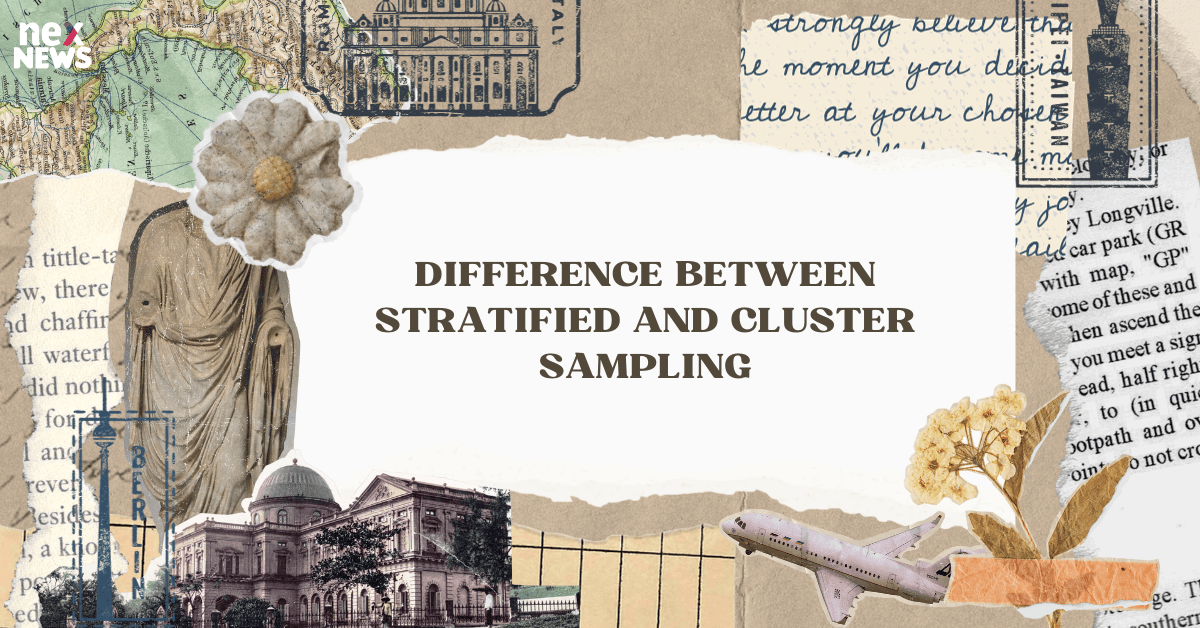Introduction
In the realm of statistical research, sampling methods play a pivotal role in obtaining accurate and representative data. Two commonly employed techniques are stratified sampling and cluster sampling. While both serve the purpose of simplifying the sampling process, they differ significantly in their approaches and applications.
Stratified Sampling
Definition and Characteristics
Stratified sampling involves dividing the population into distinct subgroups or strata based on specific characteristics. Each stratum is then sampled independently, and samples are combined to form a representative dataset. This method ensures that each subgroup is adequately represented in the final sample, allowing for more accurate analysis.
Use Cases
- Diverse Population: Stratified sampling is particularly useful when the population exhibits significant diversity in certain characteristics. For example, in a study on educational outcomes, strata could be formed based on socio-economic status, ensuring a proportional representation of various economic backgrounds.
- Increased Precision: When precision within subgroups is essential, stratified sampling is preferred. It allows researchers to draw conclusions specific to each stratum, providing a more nuanced understanding of the overall population.
- Homogeneous Subgroups: In situations where subgroups within the population share similar characteristics, stratified sampling becomes efficient in capturing the nuances of each subgroup without oversampling.
Cluster Sampling
Definition and Characteristics
Cluster sampling involves dividing the population into clusters, each representing a miniaturized version of the entire population. A random selection of clusters is then chosen, and all individuals within those selected clusters are included in the sample. This method is particularly useful when geographical proximity or logistical constraints make it challenging to reach individual elements in the population.
Use Cases
- Geographically Dispersed Population: Cluster sampling is advantageous when the population is spread across a vast geographical area. For instance, in a nationwide health survey, clusters could represent cities or towns, simplifying the data collection process.
- Cost-Effective Sampling: When resources are limited, and reaching individual elements is impractical, cluster sampling offers a cost-effective alternative. It reduces the logistical challenges associated with individual sampling.
- Time Efficiency: Cluster sampling can be time-efficient, especially when the population is scattered. Instead of navigating through the entire population, researchers can focus on specific clusters, streamlining the sampling process.
Key Differences
Unit of Analysis
- Stratified Sampling: The unit of analysis is the individual element within each stratum. Researchers collect data directly from each sampled individual.
- Cluster Sampling: The unit of analysis is the entire cluster. All individuals within the selected clusters contribute to the sample.
Independence of Sampling Units
- Stratified Sampling: Sampling units are independent of each other. Individuals within one stratum do not influence the selection of individuals in other strata.
- Cluster Sampling: Sampling units are not independent. All individuals within a selected cluster contribute to the sample, creating intra-cluster correlations.
Data Precision
- Stratified Sampling: This method allows for increased precision within each stratum, enabling researchers to draw more accurate conclusions about specific subgroups.
- Cluster Sampling: Precision is lower compared to stratified sampling within each cluster. However, it simplifies the overall sampling process.
Application in Research
- Stratified Sampling: Ideal for studies where specific characteristics significantly vary within the population and precision within subgroups is crucial.
- Cluster Sampling: Well-suited for large-scale studies with geographically dispersed populations or when individual sampling is impractical.
Conclusion
In summary, while both stratified and cluster sampling aim to simplify the sampling process, they adopt distinct approaches based on the characteristics of the population and the research objectives. Researchers must carefully consider the nature of their study, the diversity within the population, and logistical constraints to determine whether stratified or cluster sampling is the more appropriate method.


POST A COMMENT (0)
All Comments (0)
Replies (0)